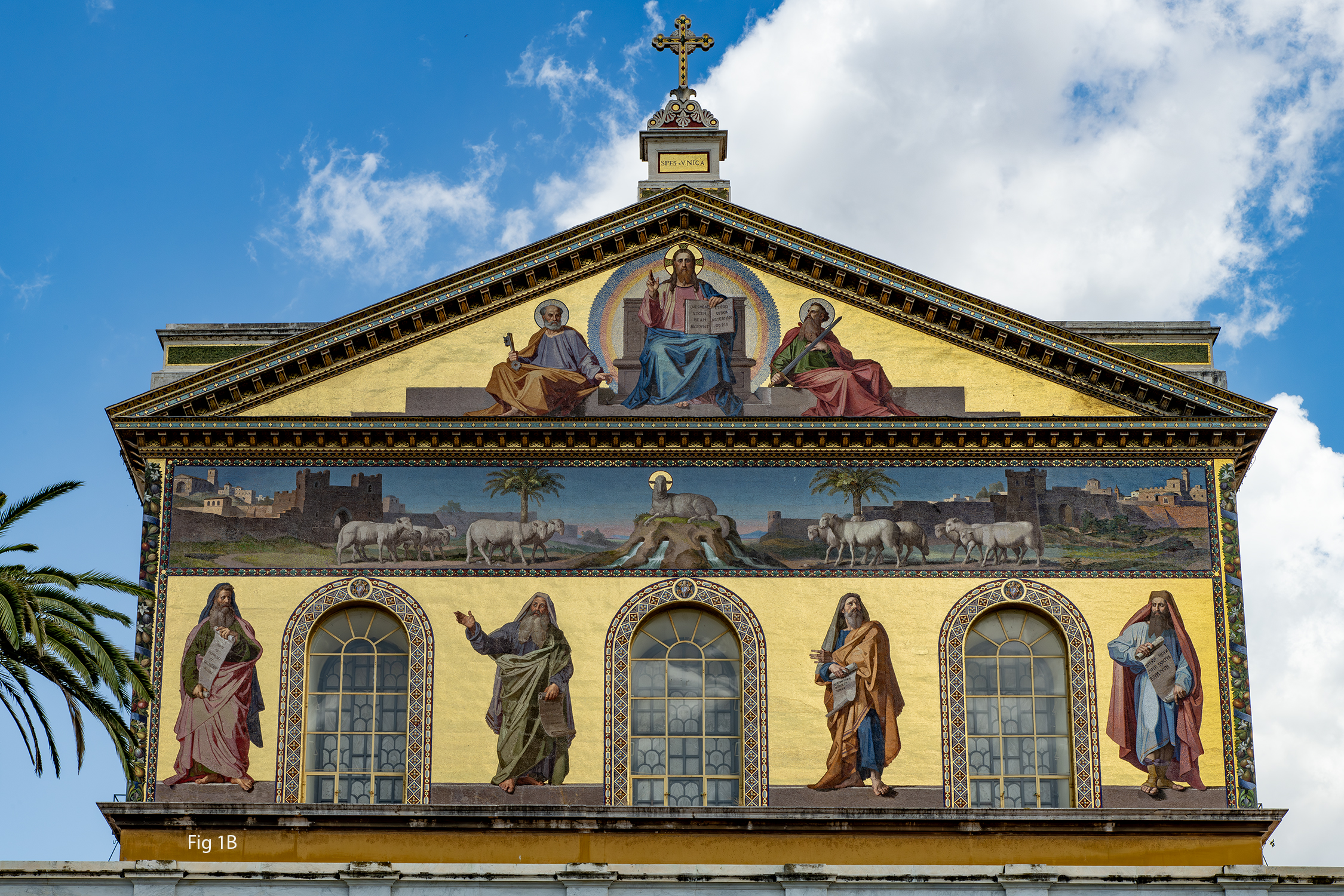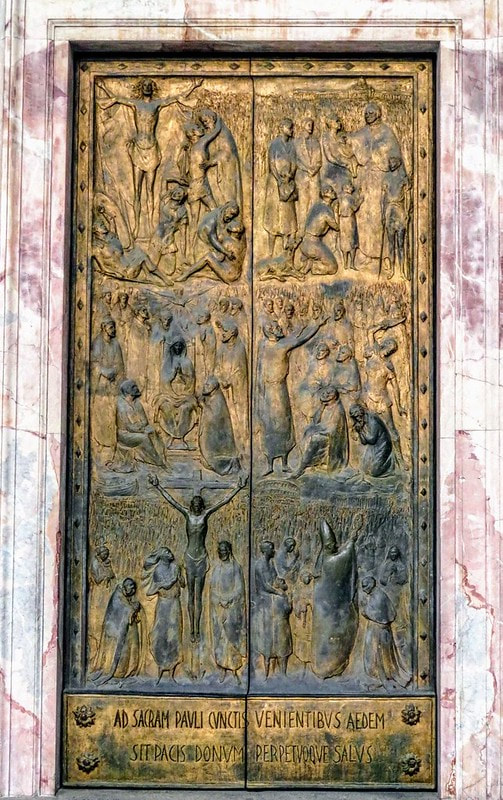
Two of the great Roman basilicas are outside the ancient walls of the city. St. Peter’s and St. Paul’s Outside the Walls. Of the two, the least visited is that of St. Paul. This is unfortunate since this basilica is one of the most impressive in Rome. Yet, its relative lack of visitors means that it retains a sacred and silent character consistent with the Benedictines who administer this site.
St. Paul’s is a study is resiliency. Originally built by Constantine over the site where St. Paul was buried (and possibly beheaded), the church underwent many modifications, expansions, renovations and ultimately, a catastrophic fire in 1823. That fire destroyed virtually the entire structure requiring a restoration process that lasted well into the later 19th century.



There is a unique beauty to St. Paul’s, apparent even as one approaches the church (fig. 1). A sculpture of St. Paul dominates the spacious courtyard of the atrium (fig 4), and the façade mosaics add color to the space (fig. 1b). Old Testament prophets direct attention to the Agnus Dei – the Lamb of God – enthroned in the center of the frieze, surrounded by sheep symbolizing the faithful. Above, Christ is seated in majesty and flanked by Sts. Peter and Paul.

The Porta Sancta is to the right of the main doors (fig 2). The current doors are the third set to grace the church. The Byzantine Doors were installed in 1070 (before there were holy years), a second set were put in place for the Jubilee of 1950 under Pope Pius XII. A completely new set of doors were created by Italian artist Enrico Manfrini for the Jubilee year 2000 (fig 3). These doors were described by David Murgia as a “sign of unity”, in no small part because their dedication was attended by representatives of Catholic, Orthodox and Protestant Christians.

The imagery on the doors combines narratives from the Gospels with images of the Pope continuing the proclamation of the Good News. The lower tier depicts the crucifixion and what appears to be the Pope blessing with the Eucharist. In the middle we see the descent of the Holy Spirit at Pentecost. To the right is depicted the preaching and martyrdom of St. Paul. Above, Christ’s resurrection is depicted with iconography that recalls the Eastern Anastasis known in the west as the “harrowing of hell”. This is accompanied by representations of the Good Samaritan and the Prodigal Son. Mercy, forgiveness, and love for human dignity is embodied in these images. Meanwhile, to the right that same mercy, forgiveness and love are carried forward by the Church, here represented by the figure of the Pope. The Latin inscription declares that “those who come to the holy temple of Paul receive the gift of peace and eternal salvation.”
Iconographically and liturgically, these doors make a significant connection between the salvific work of Christ, His call to carry out a mission of Divine Love, mercy and forgiveness, and the Church’s mission – indeed, her responsibility – to continue that work. Through the sacramental liturgies of the Church, the rivers of grace flowing from Christ extend to all who open themselves to God. This is made manifest through spiritual and corporal works of mercy and living the life in Christ that made possible by the same grace. All these things form a singular unity. Just as the imagery on the Porta Sancta flows together, so too our faith and works become one expression of the Church’s nature as the Body of Christ.
With these thoughts in mind, we now enter the enormous expanse of St. Paul’s interior, itself a testimony to the personal and communal transformation which is authentic conversion.